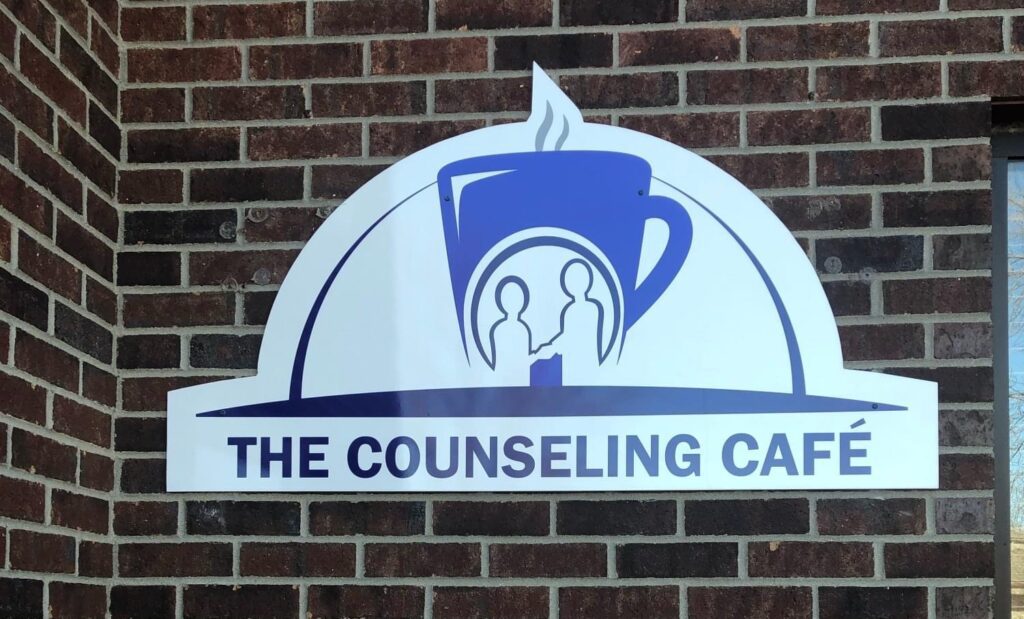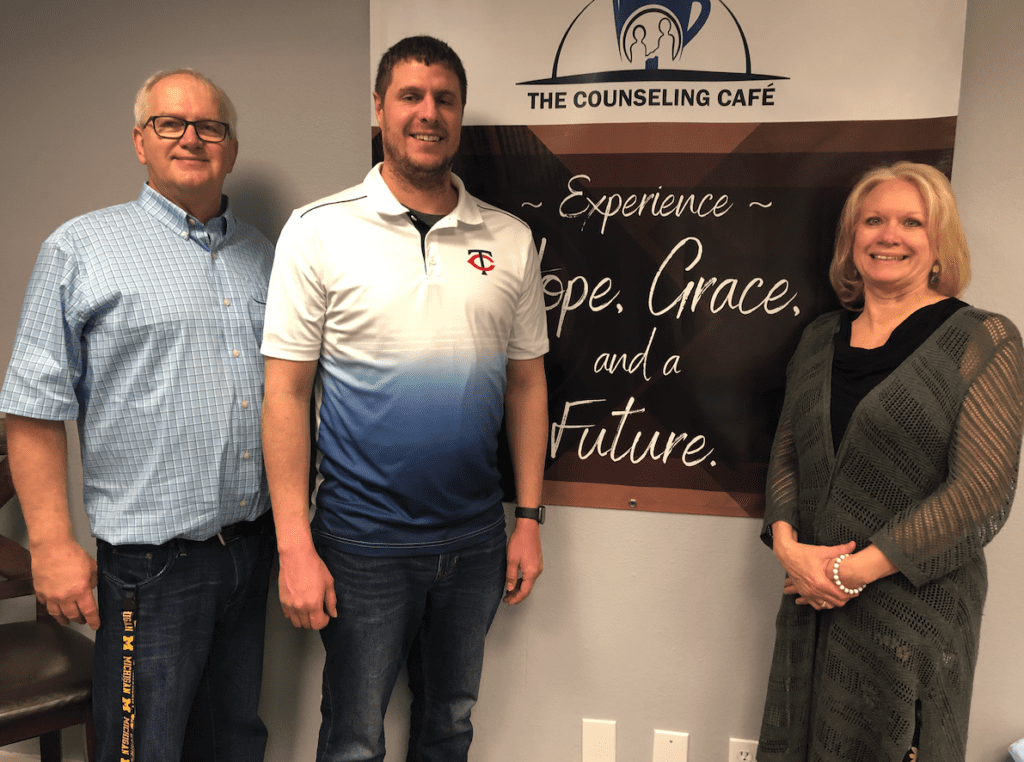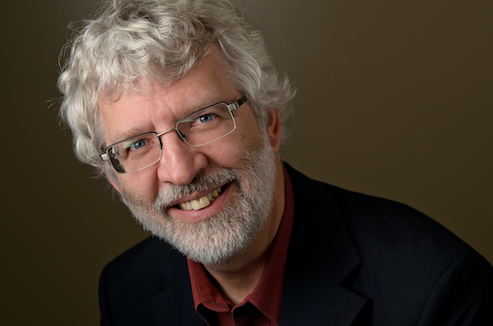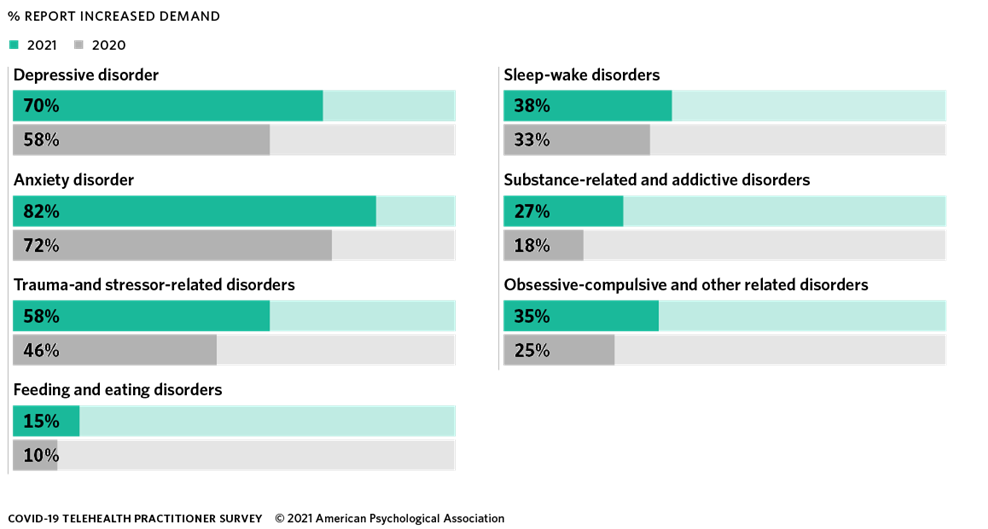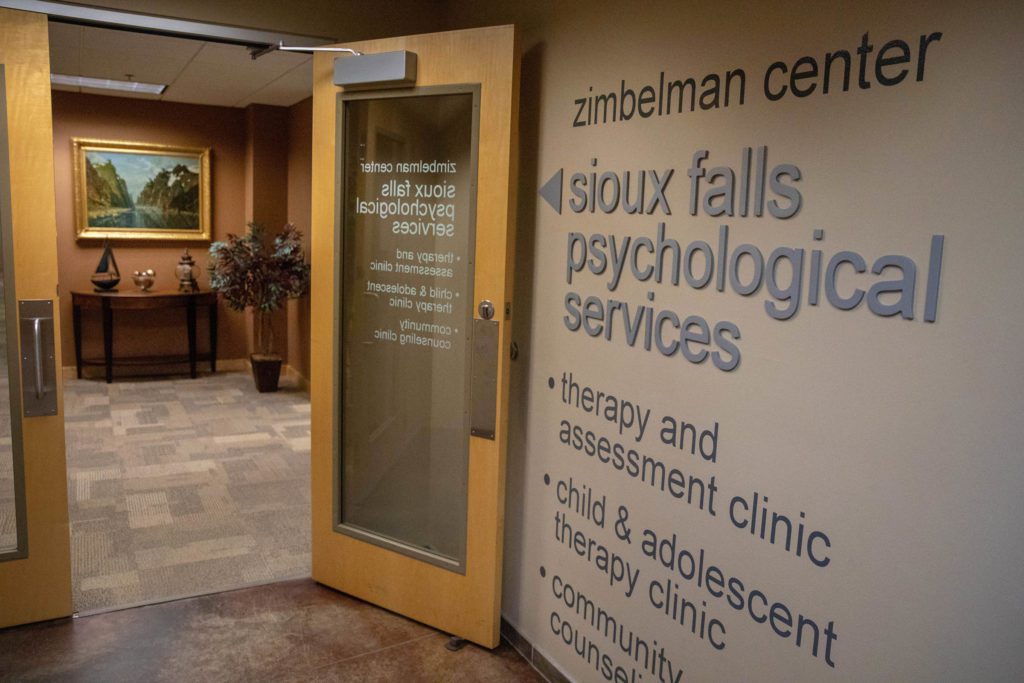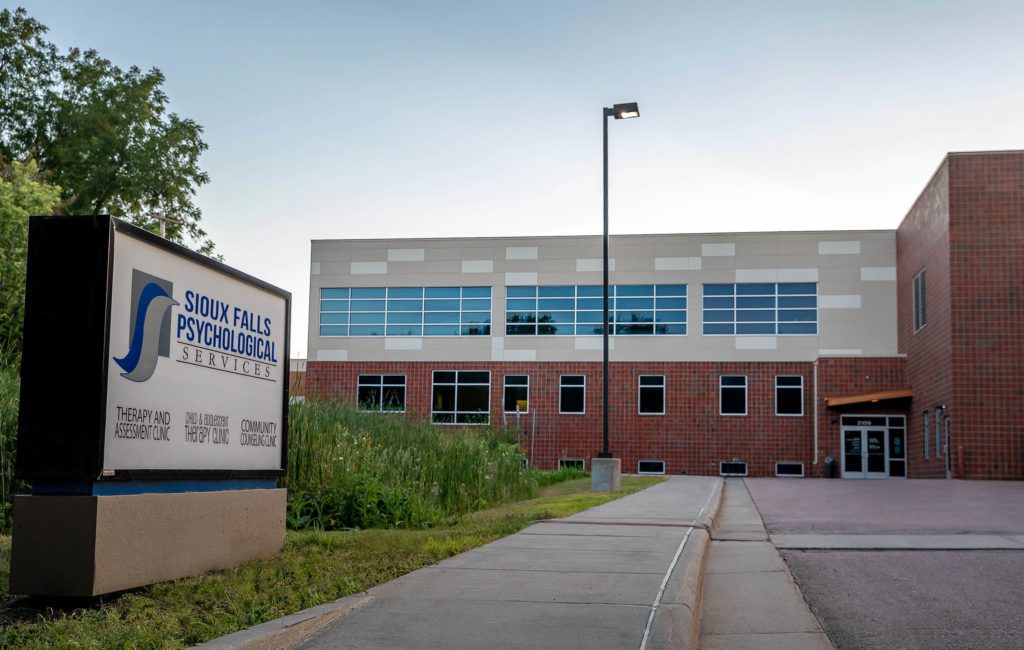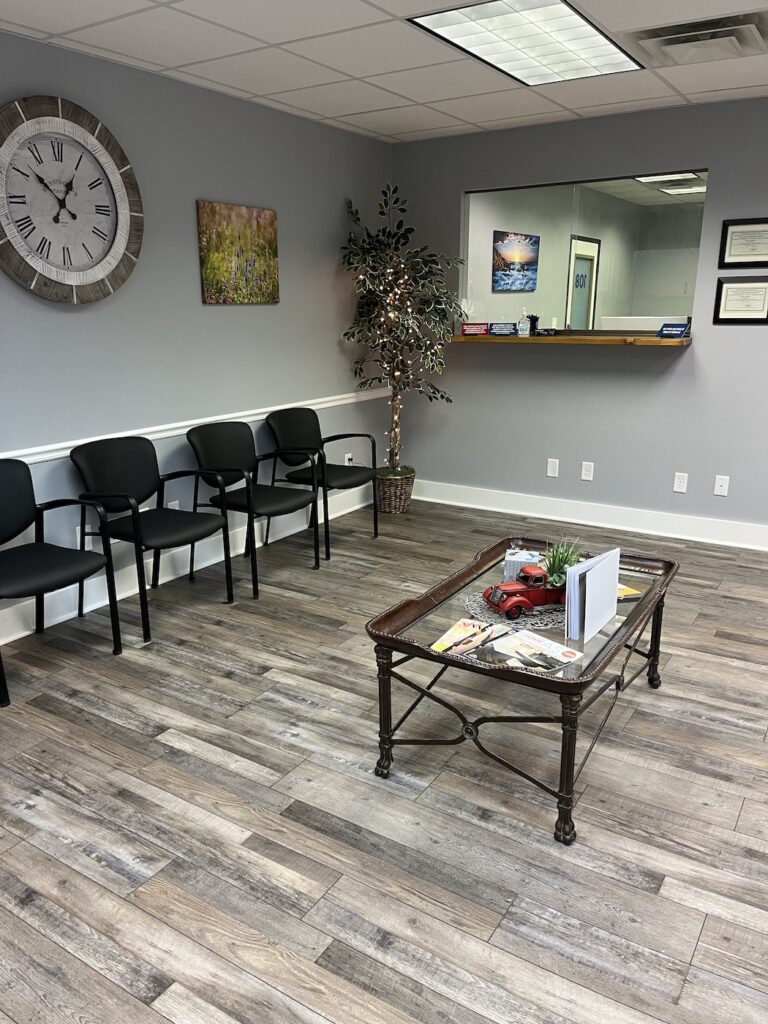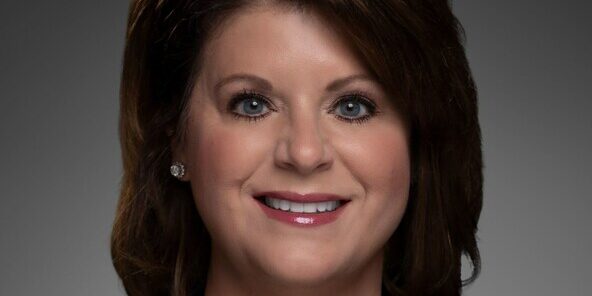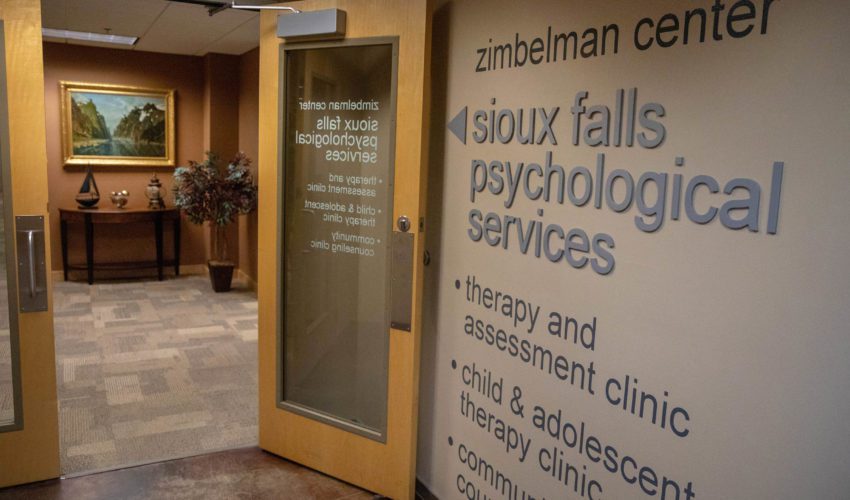With surging demand, therapists stretch to find space for new patients
June 13, 2022
The woman was driving down Minnesota Avenue, saw the new sign and called.
She then became the newest patient at The Counseling Cafe, which opened about two months ago at 4804 S. Minnesota Ave.
Luckily, there was a spot to book an appointment.
“Counseling is just a high need right now,” said Dr. Gary Hofman, who owns the practice with psychologist Zachary Seefeldt.
“I’ve been trying to take one or two new clients a week. We have all these different places where we have a steady flow of referrals, so we keep busy with honoring them as the new ones call in.”
At Sioux Falls Psychological Services, the schedule is a bit looser today than it would have been a few weeks ago because many college students have left town for the summer and freed up some appointment space.
“We’ve been extremely busy,” said Doug Anderson, who has practiced there since 1992 and serves as director of clinical services.
“We are doing some things to help absorb some of that. We just hired one person, hopefully we’re going to hire another, we’re bringing in four interns over the summer, and those are things we’re doing to grow who we are and what we have available because the need is so high.”
Nationwide, it’s the same story. A 2021 survey from the American Psychological Association found that 68 percent of respondents had longer waitlists than pre-pandemic, and 65 percent had no capacity for new patients. Referrals had increased by 62 percent, and 43 percent of psychologists had seen their overall number of patients increase.
“There’s a lapse of time where individuals just stayed very to themselves and very connected to screens and social and all that stuff, and now we’re starting to see where people are struggling with anxiety and depression to get out there again,” Hofman said.
What psychologists are seeing
The main drivers for patients seeking counseling are anxiety and depression, those in the field agreed.
“We have a culture that absolutely breeds both of those disorders,” Anderson said. “It doesn’t require one to have a predisposition in a neurological way. Our culture fosters anxiety and depression.”
The 2021 research supports that, with 70 percent of psychologists reporting increases in depressive disorder, compared with 58 percent in 2020, and 82 percent reporting increases in anxiety disorder, compared with 72 percent in 2020.
Trauma and stessor-related disorders were up 58 percent, compared with 46 percent the prior year, and sleep-wake disorders were up 38 percent, compared with 33 percent.
“We also have to deal with complicated grief issues, people passing away and there was no funeral, so we’re seeing things where there’s no closure and that triggers other trauma,” Hofman said.
The stuff of daily life is piling up too. Even the recent severe weather to strike Sioux Falls caused a number of people to seek counseling.
“That actually triggered some people’s memory of the tornado of 2019, and they’d had trauma from that, and the more recent ones have created a retriggering of that,” Seefeldt said.
Think of all the stresses in the world against a backdrop of an individual’s total “coping units,” Anderson suggested.
If the average person is equipped with 100 coping units, they begin to be used up, even unknowingly, dealing with everything from war in Ukraine to gun violence nationwide, political drama, racial struggles and even climate change.
“You begin to realize then you’ve also got all of normal life (to cope with), and that’s where we’re at,” he said. “It’s not a very pretty picture, but life is messy, and we have to learn not only to sort of tolerate mess but lean into it and say I wonder what I can learn as I navigate this messy world.”
It will vary by individual, but if you’re feeling like “life is living me more than I am living life,” it’s probably time to seek counseling, he added.
“That feeling of I’m not controlling things about my world and my responses to my world — those are the times when at an existential level it’s important to step in and talk to someone. It may not be a therapist, but a therapist would be a great person to talk to.”
Youth especially challenged
Young people in particular have been booking spots in counseling offices, those in the field said.
“Zach and I do a good deal of work with adolescents — high school kids and junior high kids — and through the time they were away from school and now, they don’t really have social skills because of what happened to them,” Hofman said.
“And now I think just the general unrest in the country, in Sioux Falls where people are experiencing a great deal of fear, they don’t feel as safe as they used to, and that starts somewhat pulling people in and pulls them down.”
Even young children are coming to therapy with issues related to politics, Seefeldt added.
“I have first and second graders who come in, and it’s usually regurgitating … but they have these strong political beliefs,” he said.
University students have been especially challenged, Anderson added.
“I think the university students may have been the most hard-hit group,” he said.
“They’re leaving home and discovering their own sense of independence and shaping their own idea of what they value … and many had to move home during COVID, they went into an online world, they lost opportunities for internships and world travel and couldn’t hang out with friends the same way. We see it across the country that university counseling centers are uber-busy, so it’s not unique to us.”
Other efforts are being made communitywide to increase capacity. Avera Behavioral Health Hospital recently opened its new addition, which brought 46 in-patient rooms for adolescent, adult and geriatric patients in addition to 24/7 behavioral health urgent care, observation care and partial hospitalization services.
At The Counseling Cafe, the hope is to add providers. Right now, each psychologist is averaging 35 to 39 slots per week, when 20 is the industry average.
“We’re attempting to do double to make sure we can cover as many people as we possibly can in this region,” Hofman said.
At Sioux Falls Psychological Services, four interns likely will see up to 1,000 patient visits in the next six to seven months, Anderson said.
“I don’t think we’ll have any problem keeping them busy,” he said. “If someone comes in with a broken arm, we don’t say we’ll see you in two weeks. So when someone comes in with a broken psyche, we try to avoid the waitlist.”

